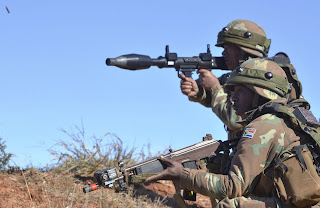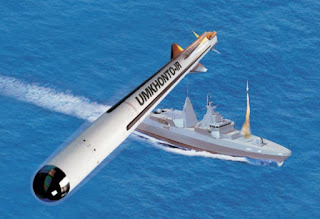Why African countries don't patronize South African Military Products.
Why African Militaries do not buy from South Africa.
An African Perspective
Why do they prefer western countries military equipment like aircraft even though most times it comes with a high price-tag while still under-performing stipulated requirement. Such example is the Nigerian Air Force various attempts to buy the Embraier Super Tucano even after the U.S Government has shown its unwillingness to sell the aircraft to Nigeria citing human Rights abuses issues.
Many developing countries especially in Africa prefers to buy secondhand or donated military equipment over new and modern equivalent this is largely due to the poor economic situation which results in low defence budget. The few exceptions in Africa are Egypt, Tunisia, Morocco, Nigeria and South Africa- South Africa usually produce whatever military equipment they need.
Although, this trend is now changing with new and modern products entering into various African Militaries inventory. Recall that countries that donate military equipment use it to support unpopular regimes or to cultivate new friendship. The downside of this action is that the receiving country relies on the donor country for its military needs (manpower, training or spares)for a long time- making it extremely difficult to pursue a different route in terms of arms acquisition.
National Rivalry
The Mwari story is typical of the scenario in Africa, in this case national rivalry is usually to blame in the sense that historically Africans do not support each other in the area of technical expertise. To be sure, South Africa makes good world class military equipment unlike what is usually found in the continent. South Africa's defence industry has a long history-- formed during the Apartheid era when the United Nations in 1977 slammed the country with an arms embargo forcing the country to build most of its military needs from scratch. This endeavor paid-off handsomely as the country now makes modern military equioment like Guided missiles, Main Battle Tanks, Infantry Fighting Vehicle, Unmanned Aerial Vehicles, Rifles and other combat support systems like advanced Communication and Electronic Warfare (EW) suites. Its civil industries has also benefited greatly, making her one of the biggest economies in Africa.
No Government Support
No defence industry can survive in a low-fund environment, there has to be at-least some local support in terms of procurement before attempting to export the system. The South African Government are known for not supporting its local military industrial complex. The South African National Defence Force (SANDF) has not made any serious military procurement from its local defence equipment developers neither has it put any real effort in the area of Research and Development (R&D) in a long while.
Lack of local procurement and support for indigenous military equipment has made most African countries to be skeptical of it's efficacy.
Corruption
Despite critics assertion that South Africa pays bribe or give kick-backs to buy military arms for example, the SAAB JAS 39 Gripen, South Africa actually don't give kick-backs during arms trade, the decision to buy or sell arms is in the hands of a few or just the President this inevitably makes arms trade susceptible to corruption. South Africa has a strict export regulations that makes it difficult to enter the international market This is to forestall corruption. In Africa, to get any type of order you have to pay kick-backs but South Africa prefers to convince the buyers of the capability ad potency of its systems than to pay bribes because it will inevitably leads to a better long term commitments and trusts from the buyers.
No Combat Experience
The primary reason African countries do not buy South African-made military equipment is because it is largely untested and not combat proven. For example the Rooivalk which was developed by Denel has not seen much export success because the gunship is not combat proven. The Rooivalk was built to counter the large soviet Armour and personnel in neighboring Angola during the Bush war of 1980 but it appeared too late to participate. The Rooivalk left the production factory in 1990 one full yer after the conflict was over. The Rooivalk was one of the world best attack gunship at the time- it was affordable and it actually works but Denel produced only 12 units with one been lost in an accident. As the gunship lacked a real combat experience, it was overshadowed by cheap Russian-made war proven gunships. Compared to that of the battle-tested American, Russian or Chinese, many South African systems have yet to prove themselves to new military customers.
To be sure, South Africa has made considerable progress in the sales of Mine Resistant And Armored Protection (MRAPS) to many African countries. In the last few years, the sale of South African MRAPS export has reached record high. Although, the market is still dominated by Russian, United States, Chinese and others. The REVA MRAP has performed well in Nigerian use proven effective in the IED filled North East of the country. South African armored vehicles has also been seen in the service of some sub-Saharan African countries military.
South African made Umkhonto anti-aircraft missile system have indeed become popular with countries with sophisticated fighter jets and warships. The Algerian Navy is a user of the system equipping their MEKO A200 class stealth warship as the primary air defense system.
As long as there are wars, SA’s defense industry will no doubt find customers despite short-term setbacks.



No comments:
Please share your views with us... We love to hear from you!